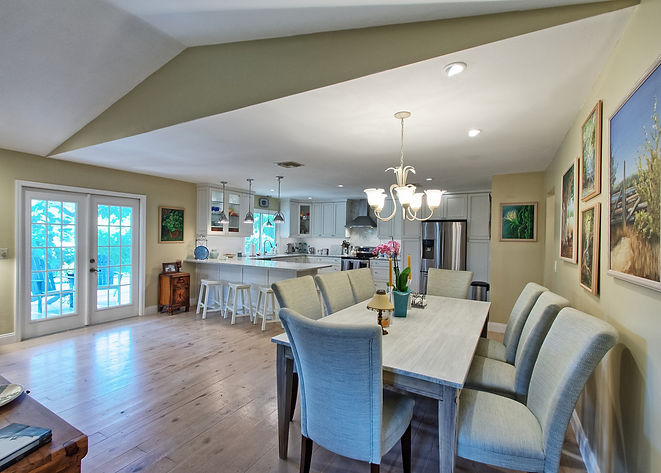
Here is a single exposure of a dining room shot with available light, as delivered by a national RE photography company. They process their standard photo orders totally by bulk. There is no human intervention. Exposure is set "correctly" by the numbers, but the image is dull.

Here is the same shot processed with our LDR technique applied. Note that colors are more vivid without harshness, and shadows are not blocked up. If we had been able to capture this one with our multi image photography technique it would have improved even more.

Here's an example of a typical HDR photo delivered by a high volume national company.
While the exposure has been fairly evened out, note how the window exposure is blown out and wood surfaces show little detail. Dark wood absorbs light and always appears darker in a photo. Our technique, below, addresses that.

This is the same image, but using our blended method, note how the wood surfaces exhibit their natural grain, the carpet shows more detail and the window is the proper exposure. Also, the duvee is its proper color. We've found that this extra touch almost always garners kudos from Sellers.

Here is an HDR image as delivered to the client by a national RE photo company. The HDR process did a pretty good job of evening out the shadows and the highlights, but note however, the blue windows. The back of the near chair is tainted by the blue window light. Also, the ceiling looks a bit dirty, and exhibits banding—both HDR artifacts.
_mls.jpg)
Finally, here is our technique of blending the multiple images and taking the best of both. Highlights and shadows on the chairs are managed better. Colors are correct. Shadows and highlights are evened out and the overall effect is more pleasing. This is what we strive to deliver in all our photography, not just the expensive products.

